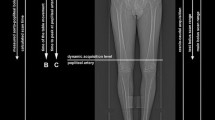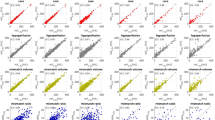Abstract
The accuracy of non-contrast MRI in diagnosing acute deep vein thrombosis (DVT) of the lower extremities is different. To explore the application of high-resolution non-contrast 3D CUBE T1-weighted MRI in the lower extremities DVT. We recruited 26 patients suspected DVT of the lower extremities from Hebei General Hospital in China. All patients underwent high-resolution non-contrast 3D CUBE T1-weighted MRI. We evaluated the sensitivity, specificity, positive predictive value, and negative predictive value of diagnosing thrombosis. And we divided thrombi into two parts: filling thrombus (FT) and non-filling thrombus (NFT), compared the agreement between MRI and Ultrasound (US) and analysed the locations of thrombi. Compared with US, MRI yielded a sensitivity of 79%, a specificity of 94.2% in mean value, a sensitivity of 85.7%, 97.4%, and 51.7% in iliac, femoral-popliteal, and calf segments respectively, a specificity of 97.6%, 88.3%, and 98.2% in iliac, femoral-popliteal, and in calf segments respectively. The accuracy of MRI in the diagnosis of lower extremity DVT was in very good agreement (κ = 0.711, 95% CI 0.627, 0.795). The FT was the most part in US and CUBE (68/56), CUBE can detect more NFT in femoral vein than US (22/4). 3D CUBE T1-weighted MRI can be used to accurately diagnose acute DVT and detect more NFT. It has the potential of follow-up at the end of treatment to establish a new baseline to stop anticoagulant drug.




Similar content being viewed by others
References
Prandoni PL, Cogo AWA, Cuppini A, Villalta S, Prins S (1996) The long-term clinical course of acute deep venous thrombosis. Ann Intern Med 125:1–7
Kahn SS, Julian I, Ginsberg JA (2008) Determinants and time course of the postthrombotic syndrome after acute deep venous thrombosis. Ann Intern Med 149(10):698–707
Tran HHG, Merriman E, Curnow JL, Young L, Bennett A, Tan CW, Chunilal SD, Ward CM, Baker R, Nandurkar H (2019) New guidelines from the thrombosis and haemostasis society of Australia and New Zealand for the diagnosis and management of venous thromboembolism. Med J Aust 210(5):227–235
Kahn SS, Julian I, Ducruet JA, Arsenault TLM, Roussin MJ, Ginsberg A (2008) Determinants and time course of the postthrombotic syndrome after acute deep venous thrombosis. Ann Intern Med 149:698–707
Patel P et al (2020) Systematic review and meta-analysis of outcomes in patients with suspected deep vein thrombosis. Blood Adv 4(12):2779–2788
Michel Dauzat M, Jean-Pierre Laroche MD, Ghislaine Deklunder MD, Jean Ayoub MD, Isabelle Que´re´ MD, Franc¸ois-Michel Lopez MD, Charles Janbon MD (1997) Diagnosis of acute lower limb deep venous thrombosis with ultrasound: trends and controversies. J Clin Ultrasound. 25(7):343–358
Needleman LC, Lilly MP, Merli GJ, Adhikari S, Hertzberg BS, DeJong MR, Streiff MB, Meissner MH (2018) Ultrasound for lower extremity deep venous thrombosis: multidisciplinary recommendations from the society of radiologists in ultrasound consensus conference. Circulation 137(14):1505–1515
Arnoldussen CS, Lambregts RHW, Lahaye MJ, Graaf RD, Wittens CHA (2014) Feasibility of identifying deep vein thrombosis characteristics with contrast enhanced MR-Venography. Phlebology 29(1S):119–124
Mendichovszky IH, Priest AN, Graves MJ, Bowden DJ, Baglin T, Hunter S, Lomas DJ, Joubert I (2017) Combined MR direct thrombus imaging and non-contrast magnetic resonance venography reveal the evolution of deep vein thrombosis: a feasibility study. Eur Radiol 27(6):2326–2332
Wang SZ, Gu JP, Feng M, Wu G, Lu LQ, Yin XD, Wu QZ (2008) Evaluation of the clinical values of MRA and MSCTA in detection of deep vein thrombosis in the low legs-comparison of DSA. Chin J Med Imaging Technol 24(3):370–373
Kang JL, Yuan YT, Quan GM, Geng ZJ (2017) Evaluation of lower extremity venous thrombosis by direct CT angiography at low dose低剂量直接法静脉CT造影评估下肢静脉血栓. Hebei Med J 39(21):3244–3247
Liang JJG, Liu D, Shi C, Luo L (2019) Application of high-resolution CUBE sequence in exploring stroke mechanisms of atherosclerotic stenosis of middle cerebral artery. J Stroke Cerebrovasc Dis 28(1):156–162
Gold GB, Beehler RFC, Han E, Brau AC, Beatty PJ, Beaulieu CF (2007) Isotropic MRI of the knee with 3D fast spin-echo extended echo-train acquisition (XETA): initial experience. AJR Am J Roentgenol 188(5):1287–1293
Xie G et al (2017) Black-blood thrombus imaging (BTI): a contrast-free cardiovascular magnetic resonance approach for the diagnosis of non-acute deep vein thrombosis. J Cardiovasc Magn Reson 19(1):4
Li ML et al (2016) High-resolution intracranial vessel wall imaging using 3D CUBE T1 weighted sequence. Eur J Radiol 85(4):803–807
Liang J et al (2019) Application of high-resolution CUBE sequence in exploring stroke mechanisms of atherosclerotic stenosis of middle cerebral artery. J Stroke Cerebrovasc Dis 28(1):156–162
Wang SF, Gu MJP, Wu G, Sun J, Mao CN, Lu LS, Yin XD (2008) Clinical application of magnetic resonance direct thrombus imaging in detection of deep vein thrombosis in the low legs. J Pract Radiol 24(5):624–627
Association CMAUM (2009) Guidelines for blood vessel ultrasound血管超声检查指南. Chin J Ultrasonog 18(11):993–1012
Zhang GA, Duan I, He ZS (1996) The accuracy of color doppler flow imaging for the detection of symptomatic deep venous thrombosis in chinese patients. Surg Today 26:683–687
Expert Panel on Vascular, Imaging (2018) Chinese guidelines for the prevention and treatment of Thrombosis中国血栓性疾病防治指南. Natl Med J China 98(36):2861–2888
Huang YK, Lin CH, Tsai YH, Hsu YC, Wang SC, Chen CW (2019) Evaluation of venous pathology of the lower extremities with triggered angiography non-contrast-enhanced magnetic resonance imaging. BMC Med Imaging 9(1):96
Ye Y, et al (2020) Comparison between the diagnostic performance of 1.5 T and 3.0 T field strengths for detecting deep vein thrombosis using magnetic resonance black-blood thrombus imaging. Clin Appl Thromb Hemost 26:1–8
Treitl KT, Kooijman-Kurfuerst H, Kammer NM, Coppenrath E, Suderland E, Czihal M, Hoffmann U, Reiser MF, Saam T (2015) Three-dimensional black-blood T1-weighted turbo spin-echo techniques for the diagnosis of deep vein thrombosis in comparison with contrast-enhanced magnetic resonance imaging. Invest Radiol 50(6):401–408
Kaya F (2019) Diagnostic performance of contrast-enhanced and unenhanced combined pulmonary artery MRI and magnetic resonance venography techniques in the diagnosis of venous thromboembolism. BJR 92(1095):20180695
Dronkers CK, Langevelde KV, Sramek A, Haren GRV, Huisman MV, Roos AD, Kroft LJM (2019) Diagnosing recurrent DVT of the leg by two different non-contrast-enhanced magnetic resonance direct thrombus imaging techniques: a pilot study. TH Open 3(1):e37–e44
Bhatt M et al (2020) Diagnosis of deep vein thrombosis of the lower extremity: a systematic review and meta-analysis of test accuracy. Blood Adv 4(7):1250–1264
Bapst BA, Vignaud JL, Kauv A, Maraval P, Kalsoum A, Tuilier E, Benaissa T, Brugieres A, Leclerc P, Hodel J (2020) Post-contrast 3D T1-weighted TSE MR sequences (SPACE, CUBE, VISTA/BRAINVIEW, isoFSE, 3D MVOX): technical aspects and clinical applications. J Neuroradiol 47(5):358–368
Carrier MR, Wells PS, Righini M, Legal G (2011) Residual vein obstruction to predict the risk of recurrent venous thromboembolism in patients with deep vein thrombosis: a systematic review and meta-analysis. J Thromb Haemost 9:1119–1125
Deatrick KB et al (2011) Postthrombotic vein wall remodeling: preliminary observations. J Vasc Surg 53(1):139–146
Comerota AJ et al (2015) A histological and functional description of the tissue causing chronic postthrombotic venous obstruction. Thromb Res 135(5):882–887
Maufus M et al (2018) Diagnosis of deep vein thrombosis recurrence: ultrasound criteria. Thromb Res 161:78–83
Stockmans FS, Vermylen J, Nyström A (1997) A technique to investigate mural thrombus formation in small arteries and veins: I. Comparative morphometric and histological analysis. Ann Plast Surg 38(1):56–62
Segal JE, Tamariz LJ, Bass EB (2007) Review of the evidence on diagnosis of deep venous thrombosis and pulmonary embolism. Ann Fam Med 5(1):63–73
Luo XZ, Zhang CM, Hu L, Feng YP, Liang GZ, Niu LY, Zhang H, Cheng L, Qi HS (2015) Risk factors associated with the severity of pulmonary embolism in patients with acute deep venous thrombosis of lower extremities. Chin J Surg 53(8):580–583
Hanley MS, Ahmed O, Azene EM, Bennett SJ, Chandra A, Desjardins B, Gage KL, Ginsburg M, Mauro DM, Oliva IS, Ptak T, Strax MR, Verma N, Dill KE (2018) ACR appropriateness criteria suspected lower extremity deep vein thrombosis. J Am Coll Radiol 15:S413–S417
Spritzer CEA, Freed KS (2001) Isolated pelvic deep venous thrombosis: relative frequency as detected with MR imaging1. Radiology 219:521–525
Yoo TA, Wang TF, Satiani B, Haurani MJ (2018) Presence and degree of residual venous obstruction on serial duplex imaging is associated with increased risk of recurrence and progression of infrainguinal lower extremity deep venous thrombosis. J Vasc Surg: Venous and Lym Disorders 6(5):575.e1–583.e1
Prandoni PP, Lensing MH, AWAESOPUS Investigators (2009) Residual thrombosis on ultrasonography to guide the duration of anticoagulation in patients with deep venous thrombosis a randomized trial. Ann Intern Med 150(9):577–585
Roberts SHL (2017) Venous thromboembolism: updated management guidelines. Am J Nurs 117(5):38–47
Masuda EK, Musikasinthorn C, Liquido S, Geling O, He Q (2011) The controversy of managing calf vein thrombosis. J Vasc Surg 55(2):550–561
Author information
Authors and Affiliations
Corresponding author
Additional information
Publisher's Note
Springer Nature remains neutral with regard to jurisdictional claims in published maps and institutional affiliations.
Rights and permissions
About this article
Cite this article
Shen, S., Lan, Y., He, L. et al. Non-contrast-enhanced magnetic resonance imaging technique diagnoses DVT and classifies thrombus. J Thromb Thrombolysis 53, 663–670 (2022). https://doi.org/10.1007/s11239-021-02538-9
Accepted:
Published:
Issue Date:
DOI: https://doi.org/10.1007/s11239-021-02538-9




